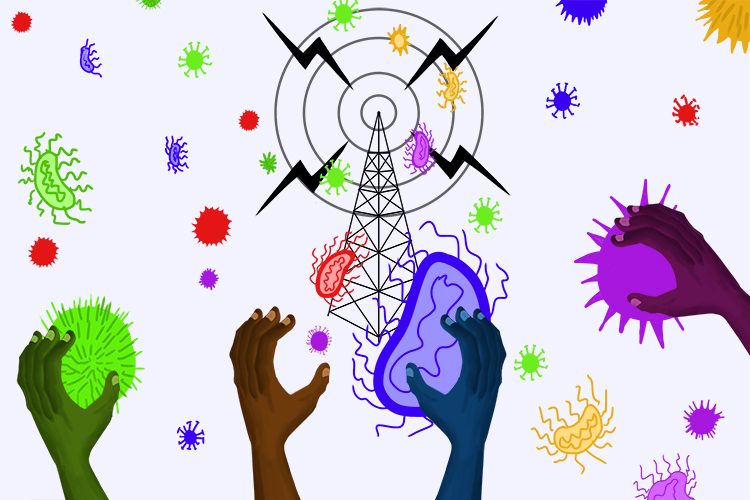Transmissible disease
Transmissible diseases are ones that can be caught by others (passed on to others).

Imagine a radio transmitter (transmissible disease) sending out a series of viruses and bacteria that are easily caught and passed on.
Examples of transmissible diseases
1. Common cold
2. Gastroenteritis
3. Whooping cough
4. Hepatitis
5. HIV/Aids
(Also any of the infectious diseases examples, and many more!)
Transmission by direct contact
Direct contact means touching – the disease-causing microorganism is passed from one person to another when their bodies touch in some way.
and
Transmission by indirect contact
Indirect contact means not touching – the microorganism is passed to someone by means other than touching another person.

The transmitter sends out viruses and bacteria. Whether you catch them yourself (direct contact), or your dog catches them and brings them to you (indirect contact), there’s always a chance you’ll catch an infection.
Examples of direct contact
1. Touching between people
2. Kissing
3. Sexual contact
Examples of indirect contact
1. Breathing in droplets from air after an infected person has sneezed or coughed
2. Touching contaminated objects (e.g. doorknobs) then touching eyes, nose or mouth




